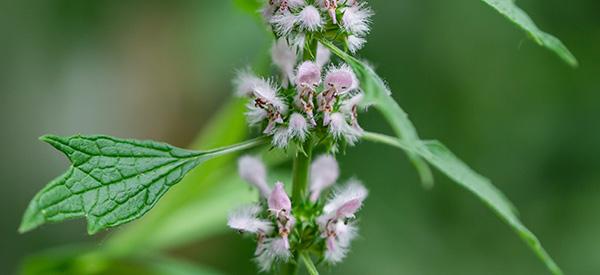
Motherwort
Motherwort (Leonurus cardiaca), commonly known as lion’s tail, belongs to the mint family. This plant normally grows 4 to 5 feet on areas where soils have been previously used for growing other plants or on those artificially placed-over soils. It also grows wildly on riverbanks and floodplains. This plant prefers partial exposure to sunlight and moist and fertile soil. In some countries, this plant is propagated for its medicinal properties and uses.
The History Of Motherwort
There is a long historical account of the medicinal use of Motherwort. This plant is said to have likely originated from both central and northern Asia, specifically in Japan and Siberia. It was later introduced to Europe in about the 17th century and subsequently to Northern America. Presently, this variety of mint has flourished largely in Canada and the continent of the United States.
- In Ancient Greece, it has been indicated for use on many female reproductive issues. Many records mention the herb was used for heart ailments and anxiety among pregnant women.
- Ancient China also claims historical use of the herb. It was traditionally used for menstrual disorders and varied gynecological issues among Chinese women. Motherwort was recorded as the highest grade plant in one of the earliest pharmacological manuscripts entitled “Shennong Bencao Jing” for its non-toxicity.
- In 1652, Nicholas Culpeper published a book, “The Complete Herbal.” The book contains a useful description and uses of motherwort, which modern herbalists keep on citing. Culpeper talked about how the herb makes women calm, and how it positively affects many mothers after child delivery. Thus, its name Motherwort has been derived.
- In 1869, William Cook, a known physiomedicalist at that time, also wrote about the herb as a good way to calm the nerves and to relieve muscle spasms, particularly the muscle found in a person’s bowel wall. Additionally, he specifically indicated that the herb is a cure for nervousness, chest pains related to palpitations, and various menstrual pains or cramps among women.
- In 1919 and 1922, Finley Ellingwood and Harvey Wickes Felter consecutively published their books, The American Materia Medica and Eclectic Materia Medica. They have described Motherwort as “nervine, antispasmodic, laxative, and emmenagogue.”
- In 1998, according to Moerman, some native and indigenous tribes in America used the herb brew as a gynecological relief for “female ills.” Meanwhile, the Cherokee and Iroquois used it as gastrointestinal help to promote digestion and as a calming aid for nervousness. The Cherokee specifically used this as a tonic for fainting.
Where This Plant Is Found
Motherwort is perennial and is widely popular in Asia and the southeastern part of Europe. However, it is considered invasive in the United States. Although the herb is uncommon in the southern part of Illinois, it is widespread in the central and northern areas of the state.
Currently, Motherwort is now growing in most parts of the world. It is usually found on woodland borders, among the groups of other plants in the bushes, underneath the trees, wetlands or moist lands, and underneath shady areas.
Related: The Complete Map of Edible Plants: Find Out What You Have in Your Area! (Video)
How to Identify Motherwort
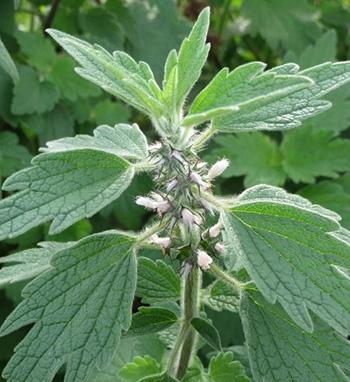 Motherwort plant grows with a stout and square stem, characteristically close to other mint varieties of plants. It stands on an erect or straight orientation, crowned with dark green and a sort of compound leaves, resembling that of a maple leaf. The leaves grow opposite from one another on the stem.
Motherwort plant grows with a stout and square stem, characteristically close to other mint varieties of plants. It stands on an erect or straight orientation, crowned with dark green and a sort of compound leaves, resembling that of a maple leaf. The leaves grow opposite from one another on the stem.
Uniquely, its petioles or stalks that spring from the stem and leaf sprout longer than the flowers. Its flowers are spiky and have five-pointed sepals or calyx.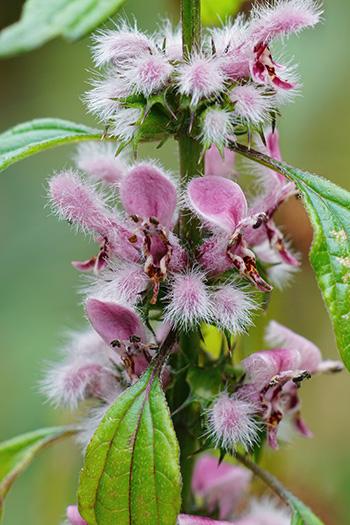
While other mint plant families may have unlobed margins and rounded tips, Motherwort leaves normally have 3 to 5 lobes. It somehow resembles 5 separate normal leaves fused together, each with pointed tips.
Related: Plant Identification Guide – 400 Wild Plants That You Can Forage For(Video)
How To Grow Motherwort
Motherwort propagates easily by seeding or through its rhizomes.
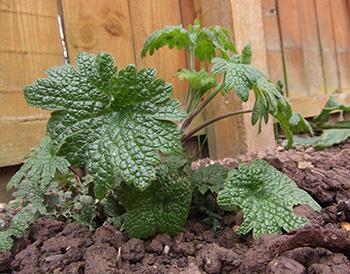 To begin growing Motherwort using its seeds, cold stratification is advised. Cold stratification is a simple method used to trick the seeds to feel as if it is already experiencing winter. The method first entails soaking the seeds for a period of at least 10 hours to 24 hours or a day. After this step, place the seeds on the sand and peats, or compost in a zipped bag. Place it inside the refrigerator for 10 days. While the seeds are in the refrigerator, regularly check to make sure that the mix does not dry up. Spritz the mixture with water if moist is absent and if it has gone dry.
To begin growing Motherwort using its seeds, cold stratification is advised. Cold stratification is a simple method used to trick the seeds to feel as if it is already experiencing winter. The method first entails soaking the seeds for a period of at least 10 hours to 24 hours or a day. After this step, place the seeds on the sand and peats, or compost in a zipped bag. Place it inside the refrigerator for 10 days. While the seeds are in the refrigerator, regularly check to make sure that the mix does not dry up. Spritz the mixture with water if moist is absent and if it has gone dry.
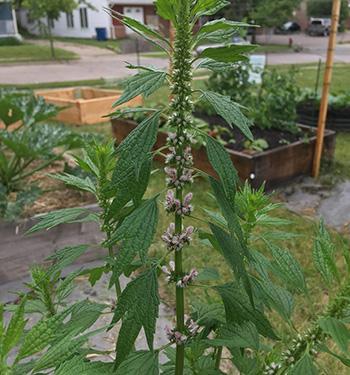
After 10 days, the seeds are ready for planting in a plot. Prepare the area by softening the topsoil using a garden hoe or any cultivating garden tool available. Space the planting 2 to 3 feet apart from each other. The seeds should be covered with at least 1/8-inch soil. Normally, one would just wait a week for it to sprout.
If you bought the seed product from a store, read the label to see if it already went through the cold stratification method before proceeding any further.
If you do not want the trouble of doing the cold stratification method, sowing the seeds in late fall is recommended. Planting during this time will help the plant to sprout and thrive easily.
Once the Motherwort matures, it quickly spreads through its rhizomes. You can simply unearth the surrounding soils where the new sprouts grow. It can be separated or gently cut so that you can plant it in a new area. When transferring, the hole should be double the length of its roots or rhizoids.
Water the young plants accordingly. Ideally, it thrives well on soils with good alkalinity of at least 7.7 pH. As it matures, there is a rare need for watering the plant as it becomes stable, sturdy, and drought-resistant. Motherwort is rarely affected by pests and diseases.
To prevent the plant from seeding, you can just cut the stems 2 to 3 inches after the flowering stage.
Related: The 10 Medicinal Seeds You Should Plant for a Complete Backyard Pharmacy (Video)
How to Harvest Motherwort
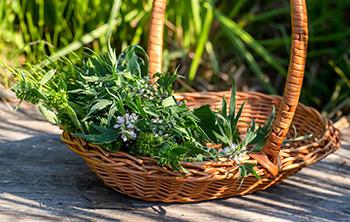
Harvest the Motherwort in full bloom. It is recommended to only cut and use the aerial or upper part of the herb where it is young, small, and supple.
The leaves on the remaining lower part can also be harvested and separated for use to prepare tea and tinctures.
What Motherwort Is Good For And The Natural Remedies Made From It
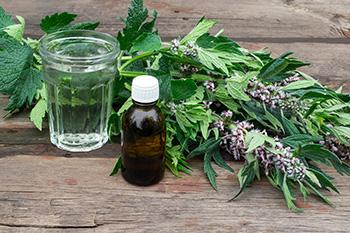 Motherwort is a popular choice for treating a variety of women’s disorders relating to the reproductive system. Pregnant women can use this to help relieve labor pain, which is usually sustained during premature delivery. It is also used to soothe post-natal depression among women. When used before a woman’s menstruation schedule, it relieves menstrual cramps and helps achieve a more regular menstruation schedule.
Motherwort is a popular choice for treating a variety of women’s disorders relating to the reproductive system. Pregnant women can use this to help relieve labor pain, which is usually sustained during premature delivery. It is also used to soothe post-natal depression among women. When used before a woman’s menstruation schedule, it relieves menstrual cramps and helps achieve a more regular menstruation schedule.
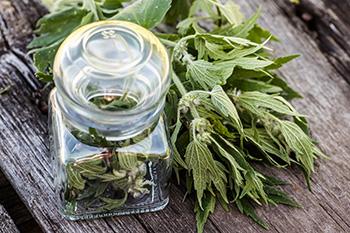
The herb contains leonurine, a chemical alkaloid, which is notable as a mild or light vasodilator. It provides an antispasmodic effect that relaxes smooth muscles like the heart. Due to its calming effect, it helps normalize palpitations and lowers blood pressure among people who experience severe stress or tension.
Additionally, Motherwort contains flavonoids, sterols, iridoid glycosides, triterpenes, tannins, and other antioxidants. Thus, it combats free radicals that are harmful to the human body. The sterols and iridoid glycosides decrease the absorption of cholesterols and triglycerides. It prevents clotting in the blood, and clustering of platelets. Favorably, the availability of tannins, triterpenes, and other antioxidants, inhibits insulin resistance development. This helps normalize glucose and insulin levels, prevents cancers, Alzheimer’s, and Parkinson’s diseases.
Some others used this herb as an anti-flatulent of intestinal gas and cure for hyperthyroidism or over-activity of the thyroid. Others apply the juice of the herb to skin ailments like common skin-itch and shingles.
Related: “Nature’s Prozac” Or The Instant Anxiety Relief Plant That Could Be Growing Near Your House (Video)
What Parts Of The Plant Are Used In Remedies?
The whole herb can be used for all the discussed health problems. This means that its roots, upper or young stems, flowers, and leaves are used for the purpose of treating disorders and ailments. Normally, the top third of the herb is cut for use while it is still soft and supple. Anyone can opt to choose the method of infusion, decoction, or tincture to extract the juice containing the precious antioxidant substances and compounds from the herb.
Infusion
Ingredients:
- 1 to 1 ½ tsp dried Motherwort herbs
- 1 cup water
Steps:
- Put the dried herbs in a glass or jar. Pour boiling water over the leaves. Steep for 10 minutes.

- Use a mesh strainer to pour the infusion into another container or cup. Discard the used herbs. Do not reuse. You may use honey, ginger, or lemon to buffer its unpleasant smell and bitter taste.

How to Use:
The Motherwort infusion would be a good use for easing palpitations due to anxiety and relieving menstrual cramps. It may also help with insomnia due to its sedative effects. However, taking Motherwort infusion along with sedative medications may cause too much sleepiness.
You may drink motherwort tea up to three times a day.
Motherwort Tincture
Ingredients:
- Dried Motherwort herbs
- Vodka, 40% to 50% Alcohol by Volume
Steps:
- Fill the jar with dried Motherwort herbs enough to fill ½ to ¾ of the jar. When using fresh leaves and flowers, fill the jar to about 2/3 to ¾.

- Pour the vodka over the herbs and make sure that it fills up to the very top of the jar. For dried herbs, 40% to 50% alc/vol or roughly 80 to 90-proof vodka works well. But for fresh herbs, use 67.5% to 70% alc/vol or about half 80-proof vodka and half 190-proof grain alcohol.

- When using a jar with a metal lid, place parchment paper between the lid and the jar to protect the lid from corrosion. Make sure that you leave as little airspace as possible between the mixture and the lid to prevent the tincture from rotting.

- Store the tincture in a cool, dry, and dark place. Shake it several times a week, or preferably once daily so that the herbs are properly soaked. Label accordingly with the date and let the mixture sit for 6 to 8 weeks. After 6 to 8 weeks, strain the tincture into a sterilized amber-colored jar to protect it against sunlight.

How to Use:
The Motherwort tincture is a good use for controlling high blood pressure, quick relief of palpitations and hot flashes from menopause. It also helps with anxiety problems and panic attacks. Use a maximum of 2 to 4 mL, three times daily.
What Plants Resemble a Motherwort?
Motherwort
| Feature | Motherwort (Leonurus cardiaca) | Mugwort (Artemisia vulgaris) | False Motherwort (Chaiturus marrubiastrum) |
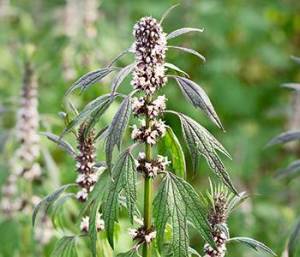 |
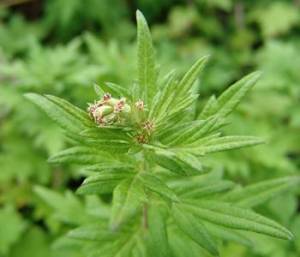 |
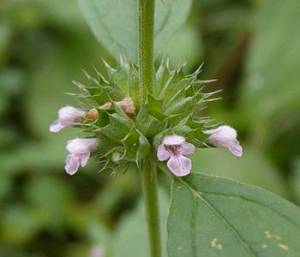 |
|
| Size | Height: 2 to 5 feet | Height: grows up 2 to 6 feet Width: 75 cm | Height: 1 to 4 inches tall |
| Leaves | Vary in size and shape. Lower leaves have large teeth and are deeply lobed, while upper leaves are smaller and narrower | Dark-green, unlobed Hairless on the upper side; silvery-white on the underside | Opposite leaves that become narrower and shorter as it ascends the stem; leaf blades are 1 to 3 inches long and flat |
| Flowers | Stalkless flowers form clusters in the upper area of the plant. Individual flowers range from pink to lavender | Yellow to reddish-brown | Flowers occur in axillary clusters with individual flowers about ¼ inch in width; blossoms are from white to pink |
| Stem | Square and hairy stems, unbranched except for the upper part of the plant | Form a longitudinal groove | Light green central stem with short hairs |
| Scent | Unpleasant distinct smell | Sage-like | N/A |
Warnings And Cautions
As always, moderate and careful use of supplements is advised.
The European Medicines Agency (EMA) advises that individuals should not consume more than 3 grams a day of Motherwort powder to avoid possible side effects. The use of tincture should not be more than 3 times a day as well. When used to treat high blood pressure, it may only be taken up to 3 months.
Unused decoctions should be discarded after two weeks and should not be consumed.
Individuals who have low blood pressure or are on medications such as beta-blockers and blood-thinning agents like warfarin are advised to consult their physicians before consuming the herb supplement.
Due to the possible stimulated contraction of the uterine, pregnant (unless during labor), breastfeeding and menstruating women with heavy outflow are warned to use this.
Excessive consumption of Motherwort may lead to side effects such as diarrhea, uterine bleeding, sleepiness, and stomach pains. Thus, it is vital to consult your doctor if you are planning to include this as a supplement to your health.
Ask Dr. Nicole: What are the best herbal remedies for anxiety? (Learn More)
30 Anti-Anxiety Remedies You Didn’t Know About

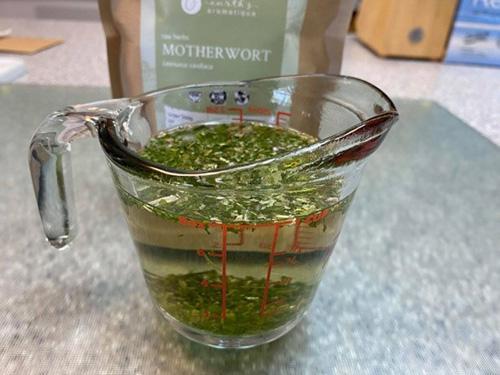
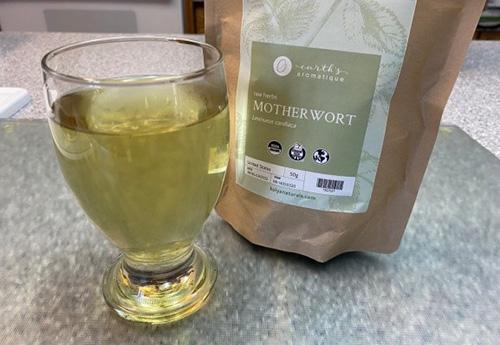
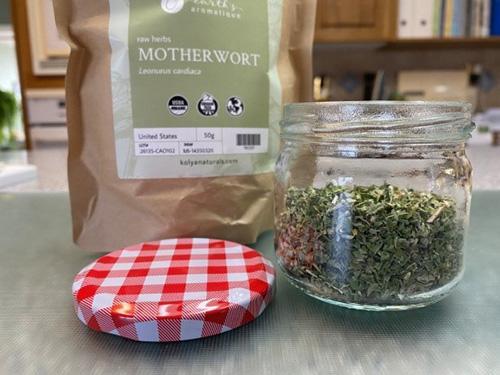
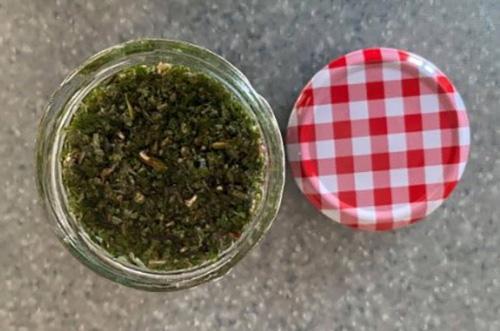
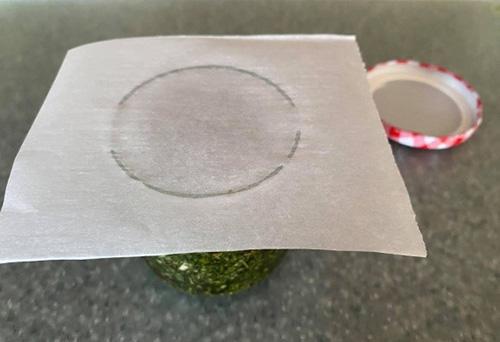
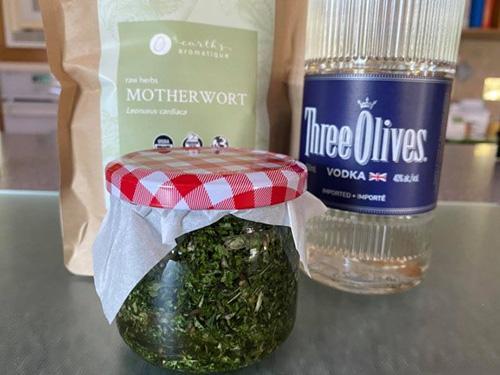

May I offer a gentle correction? This article mentions that the heart is smooth muscle. It is actually STRIATED muscle. The blood vessels, however, are lined with smooth muscle.
I’ve been waiting to see herbs that help pregnant mothers, or mother’s to be. In particular, I have a 60# canine who was diagnosed with chronic inflammation of the uterus. I’ve collected stinging nettle for it’s potential use. Would motherwort be a possibility? Can you make any other recommendations?
Wonderful article! Thank you for including so much information all in one place. And thank you to Grama PEI for the note. ‘Hoping Marsha’s canine is better soon. I am interested in knowing what works.
Just a quick correction. Motherwort is known as lion’s HEART, not lion’s tail. Leonurus = lion and cardiaca = heart.